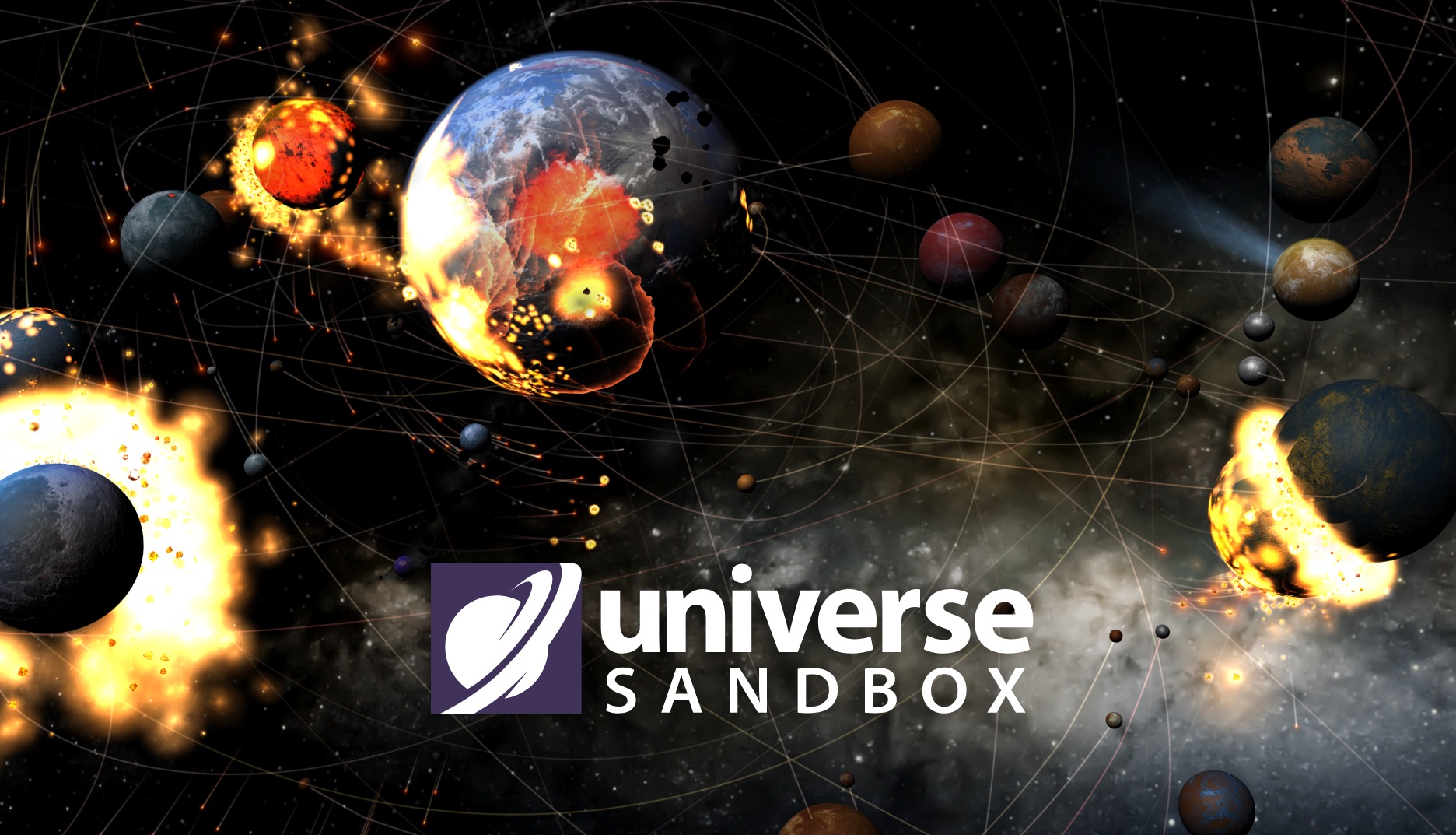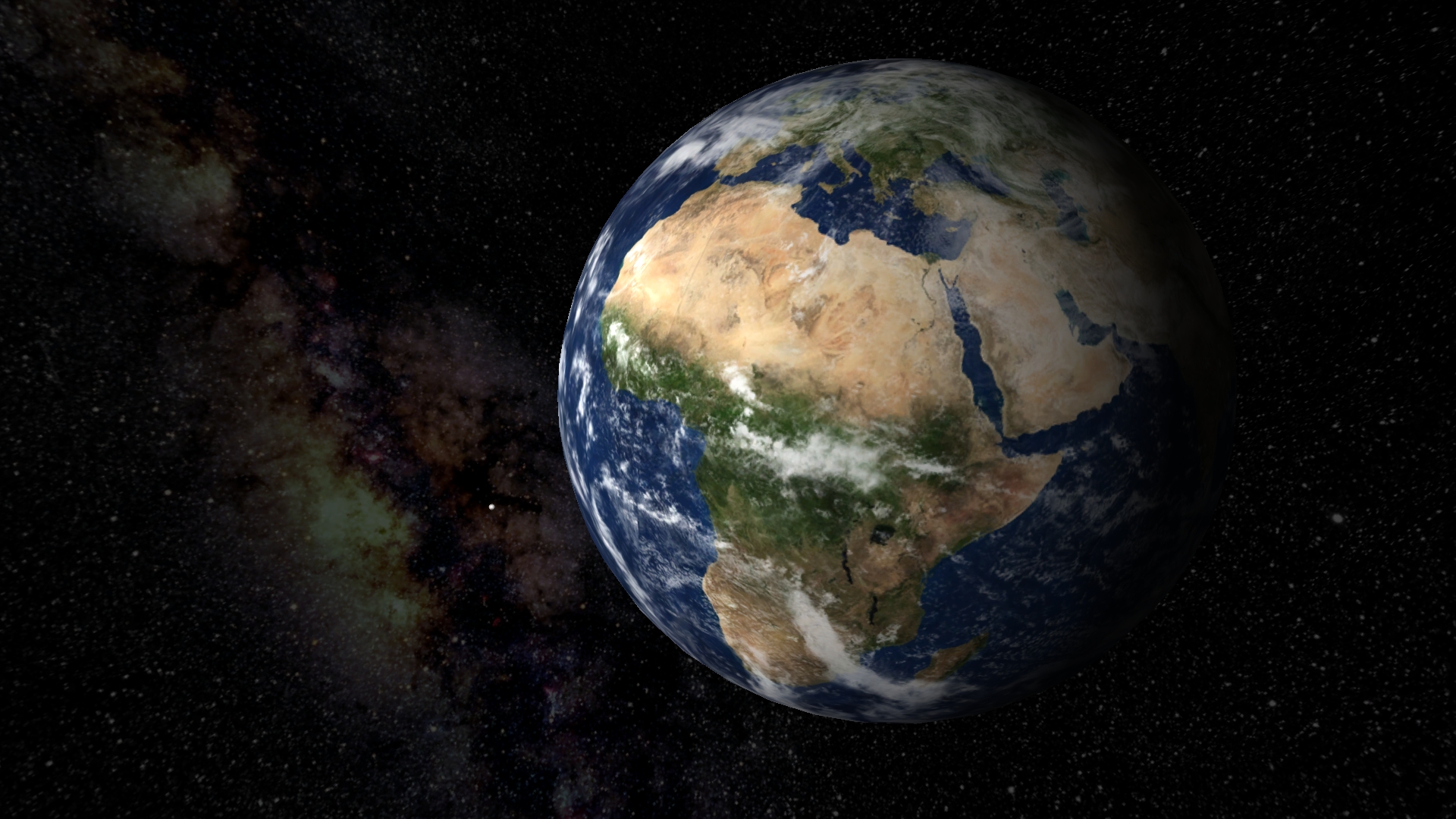Universe Sandbox
Universe Sandbox Legacy is a physics-based space simulator with some unusual fun extras.
The program works well as an educational tool. Open the 'Solar System' simulation, for instance, and you'll see an animated view of our solar system showing all the planets, the moons and their actual orbits.
Universe Sandbox 2 Ps4
Universe Sandbox - Universe Sandbox is a physics-based space simulator that allows you to create, destroy, and interact on an unimaginable scale.It merges real-time gravity, climate, collision, and material interactions to reveal the beauty of our universe and the fragility of our planet.Universe Sandbox includes the desktop version and a VR mode with support for the HTC Vive, Oculus Rift. Universe Sandbox is a physics-based space simulator that allows you to create, destroy, and interact on an unimaginable scale. It merges real-time gravity, climate, collision, and material interactions to reveal the beauty of our universe and the fragility of our planet. Universe Sandbox includes the desktop version and a VR mode with support for the HTC Vive, Oculus Rift+Touch, and Windows. Universe Sandbox is a physics-based space simulator that allows you to create, destroy, and interact on an unimaginable scale. It merges real-time gravity, climate, collision, and material interactions to reveal the beauty of our universe and the fragility of our planet. Universe Sandbox includes the desktop version and a VR mode with support for the HTC Vive, Oculus Rift+Touch, and Windows. Can I Run Universe Sandbox². Check the Universe Sandbox² system requirements. Test your specs and rate your gaming PC. System requirements Lab runs millions of PC requirements tests on over 6,000 games a month.
Universe Sandbox 2 Steam

Clicking near an interesting celestial body displays details like its velocity, mass, diameter, density and more.
It's easy to zoom in and out, or click and drag to move your viewpoint in 3D space.
That's good, but you're not restricted to the Solar System. The program has a lengthy list of other simulations to explore, from relatively local (Saturn and its rings, various planets and their moons), to very distant (distant stars or entire galaxies) and historic (Pioneer, Voyager, Ulysses and other spacecraft as they fly past planets).
Best of all, you can play around with any of this just to see what happens. Add Saturn-like rings to Earth, maybe. Change Mars to the size of the sun. Maybe explode something, and watch how the orbits change.
You only get one hour of playing around like this in the free version, unfortunately, so use it wisely. (That's an hour of manipulating the simulations - you can browse them in a basic way forever.). But Universal Sandbox Premium ($9.95) removes that restriction, and allows you to create simulations as well as open them.
Or, if you're really enthusiastic about the idea, you might prefer Universal Sandbox 2. It's hugely improved in every area - graphics, physics, climate simulation and more - and can be yours for $24.99.

Verdict:
This older version of Universe Sandbox looks a little plain, but there's still plenty of educational space exploration to be had here.

| Original author(s) | Dan Dixon |
|---|---|
| Developer(s) | |
| Initial release | May 2008; 12 years ago |
| Stable release | 2.2 / October 1, 2012 |
| Operating system | Microsoft Windows |
| Type | Educational software |
| License | |
| Website | universesandbox.com/about/ |
Universe Sandbox is an interactive space gravity simulator video game and educational software. Using Universe Sandbox, users can see the effects of gravity on objects in the universe and run scale simulations of the Solar System, various galaxies or other simulations, while at the same time interacting and maintaining control over gravity, time, and other objects in the universe, such as moons, planets, asteroids, comets, and black holes. The original Universe Sandbox was only available for Windows-based PCs, but an updated version, Universe Sandbox ², was released for Windows, macOS, and Linux in 2017.
Universe Sandbox was designed by Dan Dixon, who released the first version in May 2008. Dixon worked full-time on the project since 2010, founding the company Giant Army the following year.[1] Since then, he has hired eight additional designers for the company.[2]
Simulations[edit]
Both realistic and fictional simulations appear in Universe Sandbox, with each area of outer space being placed by default or according to the player's preference.[3][4][5] Real simulations include the Solar System, which includes the eight planets, five minor planets, 160+ moons, and hundreds of asteroids; and predictions of future events such as the Andromeda and Milky Way galaxy collision which will occur in 3.8 to 4.5 billion years. During gameplay, the player may be introduced to the regions that include the 100 largest bodies in the Solar System, the nearest 1000 stars to the Sun or the nearest 70 galaxies to the Milky Way. A visual size comparison of the largest known stars and planets can be explored, and real time animations of events like the Apophis asteroid passing near Earth in the year 2029 can be watched. Comets can be observed colliding into planets, such as the Shoemaker Levy 9's collision with Jupiter. The trans-Neptunian object 2008 KV42 with a retrograde motionorbit can be seen in a simulation. Moons are able to be converged into planets, and may be able to affect the planet's atmosphere or minerals. Players are able to view the Rho Cancri (55 Cancri) star in the constellation of Cancer; they can see the five known planets in the system. The Pioneer and Voyager spacecraft can be seen in its encounters with Jupiter, Saturn, Uranus, and Neptune. Visual Lagrange points of the Earth and Moon can be seen, along with the galaxy and star system. The gamma-ray burst locations, found in distant galaxies, can be found. Supernovas are shown in real time.
Universe Sandbox 2 Apk
Reception[edit]
| Reception | ||||||||||||
|---|---|---|---|---|---|---|---|---|---|---|---|---|
| ||||||||||||
Universe Sandbox Free
Duncan Geere of PC Gamer UK gave it an 84/100 and spoke positively of the game, 'Universe Sandbox isn't going to change your life. It isn't going to make you cry, and it won't sit in the top of your most-played list in Steam for weeks. But if you like the idea of an interactive orrery that you can rip apart and put back together in whatever way you like, and you're happy to feed it with a bit of imagination, it's hard to find a better way to spend £6.'[7] Jules of Wired said in their review, 'I've seen some pretty wonderful interactive programs that allow you and your family to explore the vast regions of the universe, but nothing nearly as enthralling as Universe Sandbox. [...] Unlike most astronomy software that just shows you what the sky looks like or where the planets are, Universe Sandbox is a powerful gravity simulator.'[8]
Universe Sandbox ²[edit]
| Developer(s) |
|
|---|---|
| Initial release | January 24, 2014; 6 years ago (early access) |
| Stable release | |
| Engine | Unity |
| Operating system | Windows, macOS, Linux |
| Type | Educational software |
| License | |
| Website | universesandbox.com |
The team began working on a complete rewrite of Universe Sandbox in 2014. Some of the new features include atmospheres being shown on planets, dynamic and procedurally generated textures on stars and gas giants, a more realistic and graphic collision system, 3D charts in chart mode, simulation of stellar evolution, procedural detail in rings/particles, visualization of black holes, simulation of fluid-like objects (such as gas clouds, nebulae and protoplanetary disks, and planetary collisions) and much more.[5] The team demonstrated many of these features at the Unite 2012 conference.[5] On November 15, 2018, the feature to share simulations through Steam Workshop was added.[10] Such simulations like Planet X crashing into Earth, Venus and Mars as the planets were billions of years ago are possible.
Universe Sandbox 3
See also[edit]
References[edit]
- ^'Giant Army | We create Universe Sandbox'. giantarmy.com. Retrieved 2019-09-24.
- ^'Universe Sandbox'. universesandbox.com. Retrieved 2019-09-24.
- ^Alex Cox (2008-10-05). 'How one man created his own universe - How Dan Dixon fashioned a whole universe out of mere bytes'. PC Plus, Issue 274 and techradar.com - computing news. Archived from the original on 2012-03-14. Retrieved 2010-01-10.
- ^'Universe Sandbox'. Universe Sandbox. Giant Army. Retrieved 25 July 2015.
- ^ abc'Archived copy'. Archived from the original on September 14, 2012. Retrieved September 12, 2012.CS1 maint: archived copy as title (link)
- ^'Universe Sandbox for PC Reviews'. Metacritic. Retrieved 2020-03-11.
- ^ abGeere, Duncan (November 20, 2011). 'Universe Sandbox review'. PC Gamer.
- ^'The Universe Is Your Sandbox With Universe Sandbox'. Wired. August 4, 2011.
- ^'Star Fusion & the Brown Dwarfs - Update 26.1'. Universe Sandbox | blog. November 20, 2020. Retrieved 2020-11-24.
- ^'The Universe Just Got Bigger - Update 22'. Universe Sandbox | blog. November 15, 2018.
External links[edit]
